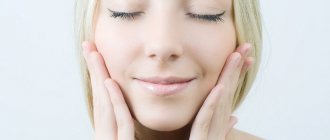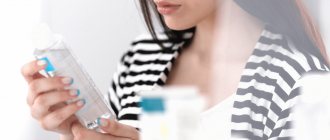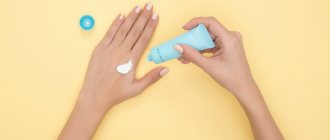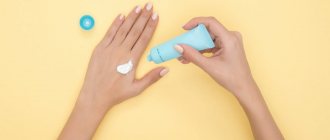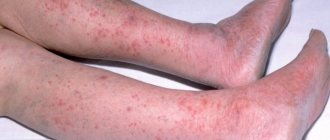What are sebaceous glands?
Each hair is equipped with a sebaceous gland, and sometimes more than one. Their excretory ducts open in the hair follicle and release about 20 g of sebum per day. The composition of sebum includes29:
- fatty acid;
- glycerol;
- alcohols;
- wax esters;
- cholesterol;
- metabolites of steroid hormones, etc.
Sebaceous glands are located almost throughout the body, but their largest number is on the face, back, and scalp. These zones are called seborrheic. At the same time, their smallest number is on the border of the lips, the back of the hands, but on the soles and palms there are none at all. 29
In seborrheic areas, the density of sebaceous glands can reach 900 per 1 cm2. The sebaceous glands begin to manifest their functions as actively as possible in adolescence; this period can last up to 25 years. 29
When secretory function is disrupted, skin problems begin. If there is not enough sebum secreted, it flakes off, and signs of aging appear faster. And when too much content of the sebaceous glands is secreted, rashes may appear. 29
Sebocytes (cells of the sebaceous glands) are sensitive to sex steroid hormones. The cytoplasm of their cells contains enzymes that convert androgens into dihydrotestosterone, which promotes the secretion of more sebum. 29
Vulgar acne
One of the most common skin diseases, affecting up to 85% of people aged 12 to 25 years and 11% of people over 25 years of age. Acne can lead to disfigurement and permanent scarring. But even mild cases cause significant emotional distress and have serious psychosocial consequences. Acne is a disease of the hair follicles and sebaceous glands. Four interrelated factors are important in pathogenesis: 1. Pathological follicular hyperkeratosis
– this is a violation of the processes of keratinization, which leads to blockage of the follicular duct by horny scales and the formation of a comedon (black head).
Subsequently, closed comedones turn into inflammatory papulopustular elements and transform into open comedones. In closed comedones, the drainage of sebum and waste products of Propionibacterium acnes is completely blocked. The created oxygen-free conditions are an optimal environment for the rapid proliferation of microorganisms. 2. Excessive formation of sebaceous gland secretion
, which is a substrate for the proliferation of P.acnes, and also leads to pronounced cosmetic defects due to the formation of deep sebaceous cysts (atheromas).
3. Microbial colonization
, in particular the proliferation of P. acnes.
4. Inflammation and immune response
. Acne is not a primarily immune disorder. P.acnes causes inflammation in the dermis (deep layers of the skin), and the epithelium (surface layers of the skin) is damaged by proteolytic enzymes. First, migration of lymphocytes occurs at the site of inflammation. Neutrophilic leukocytes penetrate the lesion and it is they who contribute to even greater damage to the follicle epithelium as a result of lytic enzymes. Highly active radicals (oxygen free radicals, hydroxyl groups, hydrogen peroxide superoxides) accumulate in the dermis, which further damage cells and support inflammation. Inflammation develops at any stage of acne. Today there is no single classification of acne. Existing classifications of acne are based on the clinical picture of the disease or on an assessment of its severity. The most successful is the etiopathogenetic classification. In this review, it is presented with the aim of expanding the understanding of this problem, which will allow us to determine the significance of the disease and optimize the creation of drugs for local and systemic use for the above-mentioned disease.
What do people with oily skin suffer from?
If you have oily skin, it means that the sebaceous glands on your face produce too much sebum. In addition, they can expand and become clogged with comedones. Such skin appears to be covered with mini-craters and looks unaesthetic. At the same time, the oiliness of the skin surface itself does not indicate that you will definitely have acne.
In some cases, after washing, a feeling of tightness may occur, this indicates a violation of the lipid barrier of the epidermis - a lack of ceramides in it, which are responsible for creating a protective film on the skin.
The lipid barrier could be damaged as a result of improper care, for example, frequent use of aggressive lotions containing alcohol.
How to fight
What to do when your facial skin quickly becomes oily? Modern cosmetology offers a huge number of different solutions, effective to one degree or another. However, they are not at all a panacea for any problems in the body. Therefore, it is advisable to first visit a doctor who will help to accurately determine the cause of such phenomena. Only after all health issues have been resolved can you turn to the remedies described below.
Injection cosmetology
It involves influencing the skin with injections. At the same time, various drugs are injected into the middle or uppermost layers using microneedles, which in our case combat the increased secretion of sebum.
Ozone therapy
The main effect of this procedure is based on improving the delivery of ozone molecules into cells, which actively stimulates the antioxidant system. In the gas injection zone, the metabolic rate increases significantly, therefore, the elimination of toxins and other “garbage” is accelerated. At the same time, immunity and turgor increase, acne and blackheads go away, and color improves.
Mesotherapy
During this procedure, special “cocktails” made up of caffeine, hyaluronic acid, various plant extracts and essential vitamins are introduced into the middle layer of the skin. It can solve several main problems:
- slows down aging;
- removes lipid deposits;
- eliminates excessive fat.
Post-acne and pimples can also be removed after the course, or at least their visibility can be significantly minimized.
Hardware procedures
Oily facial skin type necessarily requires active care, especially the most problematic areas - forehead, nose, chin and cheeks. Properly selected options are well suited for these purposes, where special devices and equipment are indispensable:
- ultrasound phonophoresis;
- biostimulation using laser;
- darsonvalization;
- grinding with aluminum oxide or diamond chips;
- iontophoresis;
- ultrasonic peeling.
All of the above is performed exclusively in specialized offices, in which specialists must have the appropriate documents.
Microcurrent therapy
This is the name of the method of influencing the surface of the skin with fairly weak electrical impulses, fluctuating in the range of 40-1000 microamps. The procedure has a minimal list of contraindications and is also quite effective. Efficiency is achieved through a simultaneous effect on lymphatic and blood vessels, muscles and dermis. The procedure makes it possible to put even a fairly severely affected surface in order, with virtually no negative sensations.
Photorejuvenation
The essence of the technique is the correct exposure of the surface to light rays of a certain frequency. It is completely safe for health, has virtually no contraindications, and does not imply any invasion of the epidermis at all. The results of the procedure are usually visible from the first session, and the final effect occurs after 3-5 repetitions.
Aesthetic cosmetology
To quickly and without consequences eliminate excess fat, homemade formulations are sometimes not enough. Then it's time to contact a specialist. An experienced professional must first refer the patient for a medical examination to find out the causes and contraindications, and only after that makes prescriptions.
Drugs
Bb Laboratories – Two-phase serum concentrate
Curacen – for injection
Curacen Essence (20 fl x 2 ml)
Nanoneedles with ultra-thin walls 34G
Cares
For high-quality results, professional products are used that directly affect the regulation of gland secretion. They usually have a high concentration of active components, which distinguishes them from the usual analogues used in everyday life. In your care, you can use the Cream Clay Mask, which effectively restores the skin's purity and healthy appearance, or the delicate Clear Oil Cleansing oil for deep cleansing. It removes makeup, deep skin impurities, dead cells of the stratum corneum and excess sebaceous glands.
Purges
As a rule, the dermis with increased sebum secretion is quite dense, so it “clogs” much faster than any other. Without thorough cleaning and constant care, it will become very shiny. There are several types of high-quality professional cleansing:
- manual;
- combined;
- ultrasonic;
- chemical.
All options are aimed at freeing clogged pores from their contents and thereby reducing the main indicators of pollution. Similar procedures are recommended not only for increased sebum secretion, but also for acne, milia, blackheads and other defects.
Cosmeceuticals as help in a difficult struggle
It includes cosmetology and medicine, which allows it not only to fight visible imperfections, but also to eliminate the cause from the inside. This is one of the most effective and modern treatment methods. For example, the drug GHC Placental Cosmetic is able to transform the dermis at the cellular level, eliminating excess oil. In addition, it stimulates the production of natural elastin and collagen, reduces the number of existing wrinkles, normalizes the water-lipid balance, and eliminates the prerequisites for the development of hyperpigmentation. You can also use Placenta Extract, which effectively restores cell structure and normalizes their functions, and also increases skin elasticity and helps eliminate irritation and inflammatory reactions.
Solving problems with a doctor
Many people have a question about what to do and what treatment for very oily facial skin can be effective and safe. By contacting a doctor, you can find out why certain processes occur, without which it is unlikely that you will be able to choose the right therapy. Alternatively, you may also need to consult an endocrinologist who deals with hormonal imbalances, which also often cause excessive sebum production.
Usually, if you have a genetic predisposition, doctors recommend monitoring your lifestyle and diet, and regularly caring for your skin using special formulations. However, through increased secretion of the sebaceous glands, the body can signal the development of any diseases. Such manifestations cannot be ignored, especially if they arise suddenly.
How do changes in the functioning of the sebaceous glands affect the condition of the skin?
Changes in sebum secretion are one of the factors in the development of acne. Sebocytes in the sebaceous glands synthesize free fatty acids even without the participation of propionibacteria. This makes it likely that aseptic inflammation will develop without the presence of a bacterial component.
With hyperseborrhea, not only the amount of sebum produced changes, but also its composition, in particular, the content of linoleic acid in it decreases. Its deficiency can cause follicular hyperkeratosis40. This is due to the ability of linoleic acid to regulate keratinocyte differentiation10.
Regulation of the level of sebum secretion is also entrusted to hormones. Estrogens suppress, and progesterone and androgens, on the contrary, stimulate the process of sebum production.
Against the background of hyperseborrhea and increased keratinization of the skin, inflammation and blockage of the sebaceous gland channels occurs. Since it becomes impossible for air to get inside them, conditions are created for the proliferation of P. Acnes10.
Treatment by a specialist
Most often, the cause of excessive oily skin in women is an imbalance of the hormonal system. In order to refute this or confirm it in a specific situation, you need to see a doctor and take tests, which he will evaluate and make a diagnosis.
I, Georgy Nikitich Romanov, am an endocrinologist, conduct face-to-face and online consultations for a fee. I know how to reduce oily skin and where to look to find the cause of the problem. I have enormous experience working with patients with various problems, and I have many grateful people who can live a normal life today.
To obtain information about a consultation and to sign up for it, you can contact me through one of the following sources: Vkontakte, Viber, Instagram, Skype, WhatsApp, Telegram.
Care for problem skin and treatment of acne using the topical antibiotic Clindovit®
Proper skin care is as important as the selection of therapeutic medications. Morning hygiene for problem skin can be like this:
- Cleansing. You need to wash your face using “light” products, for example, foam or gel. If the manufacturer indicates on the packaging that the product can be left in, it is not suitable for oily skin, as it does not provide high-quality cleansing.
- Toning. The purpose of this stage is to tone the skin and normalize the pH. Lotions and sprays cope with this, which may additionally have antiseptic, anti-inflammatory, pigment-constricting, exfoliating effects.
- Protection. Creams for oily skin can have matting, sebostatic, astringent and other effects. These are products with a light texture and a moisturizing effect. The content of nutritional components in them should be low. It is also important that creams have a high sun protection filter.
Of course, the main role in the treatment of acne is not given to proper care, but to the use of medications, for example, the topical antibiotic Clindovit®. It should be applied to clean, dry skin twice daily6. Clindovit® gel reduces the level of free fatty acids on the skin and exhibits antimicrobial activity against propionibacteria6.
Acne classification
A
.
Constitutional acne 1. Seborrheic acne in childhood adolescence and adolescence: - acne of newborns - acne of infants - juvenile acne 2. Late acne: - premenstrual acne - postmenstrual acne - late hyperandrogenic acne in women - conglobate cystic acne in
men
B. Provoked acne 1. Artificial acne (mechanical, traumatic) 2. Oil acne (including professional acne) 3. Cosmetic (can be considered as a contact variant, usually found in women 20-30 years of age who abuse cosmetics). 4. Excoriated (In most cases, it manifests itself in a mild form. Each new rash is squeezed out, scratched or processed with some instrument. A smooth transition of this acne into a disease with abnormal neurotic behavior is possible. Some authors distinguish three degrees of severity of acne: mild form acne is diagnosed mainly in the presence of non-inflammatory elements - closed and open comedones. The moderate form is characterized by the presence of papulopustular elements on the face and torso. The severe form is characterized by a large number of papulopustular elements, as well as conglobate and cystic forms of acne. In recent years, acne treatment has been carried out taking into account pathogenetic aspects and therefore has become more targeted. Diet
... Food does not affect the amount and composition of sebum and the processes of keratinization of follicles. However, individual observations of patients should be taken into account.
Psychotherapy
... Patients with acne often suffer from disfiguring facial changes.
Acne is not caused by mental factors. Acne therapy itself is based on effective therapy, and not on psychotherapy. Psychotherapy that accompanies treatment can help in certain situations. Drug treatment
. Local and systemic therapy is used to treat acne. Topical treatment is indicated only for mild to moderate non-inflammatory acne, mild inflammatory acne without scarring, and as adjunctive therapy for moderate to severe acne. The most actively used drugs, both systemic and local, are retinoids. They act on follicular hyperkeratosis. Retinoids are universal inhibitors of lipogenesis and sebum secretion, normalize keratinization processes, and reduce the inflammatory response. The most well-known drugs are: tretinoin, airol, differin, isotretinoin, lokatsid, retin-A, clinesfar. An isotretinoin derivative, roaccutane, is used as a systemic drug. In addition to retinoids, you can influence excess sebum production with the help of antiandrogenic substances. Most are oral medications. The most famous are: Androcur, Diane-35, spironolactone. The latter can be used in 3-5% concentration, but it, as a rule, has a weak therapeutic effect. Microbial colonization of the follicle is affected by antibiotics and antiseptics, which are used both as local agents and internally. The most commonly used are tetracycline, erythromycin, and clindamycin. One of the options for local anti-inflammatory treatment of acne is curiosin gel. It contains natural components - hyaluronic acid, zinc, substances that are part of many tissues of the human body, primarily the skin. The drug is recommended by manufacturers for the treatment of any form of acne, however, as a result of long-term observations of the practical use of the gel, a lack of clinical effectiveness in its use has been established. In addition to specific local and systemic drugs that affect the pathogenesis of acne, patients often require additional measures (adjuvant therapy).
Additional care
- It is better to leave ordinary creams, cream or milk in the past, as they are little compatible with the original data. It is optimal to select special gels, micellar water, tonics.
- It is recommended to use soft exfoliants if there are no inflammatory processes on the surface. It is advisable to choose options that have the specification “non-comedogenic” in the instructions.
- It is advisable to select all basic activities with a focus on regulating the functioning of the sebaceous glands. Moreover, preference should be given not to those procedures that are vaguely “intended for this type of skin,” but specifically those that narrow pores.
